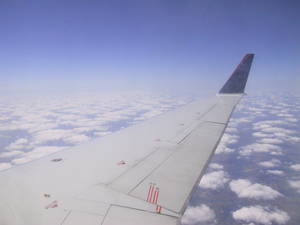Ever since the Wright brothers first took to the air in 1908 aircraft have been controlled by moving surfaces in order to deflect air in different ways, in a conventional plane, elevators, aerolons etc. In most cases this isn't a major issue, but these moving surfaces can be a maintenance headache, create lots of noise, and in a military aircraft ruin your carefully crafted stealthy shape.
Researchers from BAE systems, Cranfield and Manchester University have flown the  first aircraft without moving any surfaces at all, instead they have been controlling it using something called the Coanda effect, the tendency of a stream of fluid to stick to a curved surface. Like the way a stream of water from a tap will stick to the back of a spoon. At some point however the air will detach from this curved surface, and it is relatively easy to affect this point. The team has used air blown from a jet engine on a Demon UAV, to alter the direction air leaves a wing, this affect the amount and direction of lift produced, so allowing them to control the aircraft.
first aircraft without moving any surfaces at all, instead they have been controlling it using something called the Coanda effect, the tendency of a stream of fluid to stick to a curved surface. Like the way a stream of water from a tap will stick to the back of a spoon. At some point however the air will detach from this curved surface, and it is relatively easy to affect this point. The team has used air blown from a jet engine on a Demon UAV, to alter the direction air leaves a wing, this affect the amount and direction of lift produced, so allowing them to control the aircraft.
This will probably appear in military aircraft long before airliners, but some related technologies could be used to reduce the noise from aircraft taking off and landing and would be more practical.










Comments
Add a comment